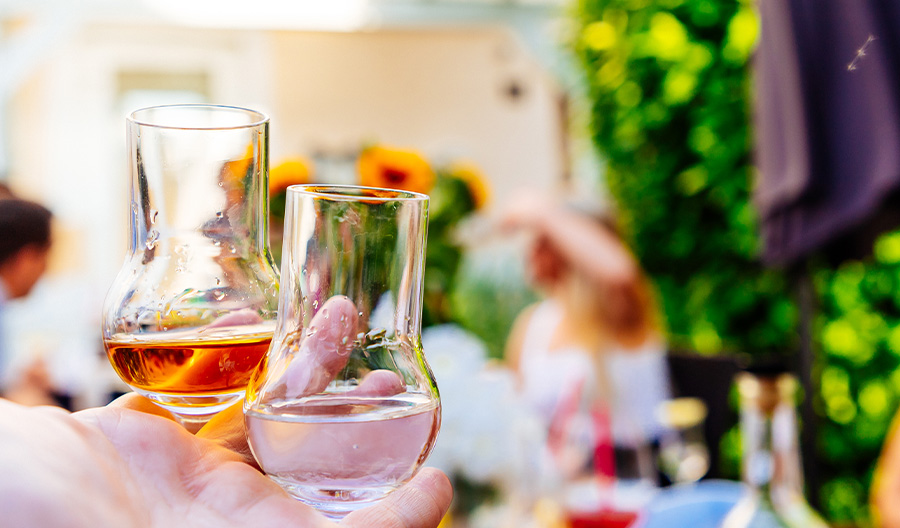In the bartending world, herbal liqueurs play a significant role due to their unique flavors and versatility. One of the most commonly used is a French liqueur made by the Carthusian Monks since 1737. It's available in two varieties: green, which is stronger and more herbal, and yellow, which is sweeter and milder.
Another popular herbal liqueur is from Germany. Known for its distinctive taste, the liqueur is made from 56 different herbs, fruits, roots, and spices. It's often used in cocktails, but it's also enjoyed neat or on the rocks.
There is an Italian herbal liqueur that bartenders frequently use. It's made from a combination of 70 different botanicals, including mint and fennel. It is often used in classic cocktails like the Stinger.
Lastly, there is a herbal liqueur produced in France. It's made from 27 different herbs and spices, with a base of brandy. It is known for its rich, complex flavor and is used in a variety of cocktails, including the classic B&B.

What are the origins of popular herbal liqueurs?
Herbal liqueurs have a rich and varied history, with their origins tracing back to ancient times. The practice of infusing alcohol with herbs, spices, and other botanicals was initially carried out for medicinal purposes. Monks and apothecaries were the pioneers in this field, using the liqueurs as remedies for various ailments.
The origins of many popular herbal liqueurs can be traced back to Europe. For instance, a French liqueur, was developed by Carthusian monks in the 17th century. The recipe said to contain 130 different plants, was given to them as part of a manuscript titled 'An Elixir of Long Life'.
A well-known German herbal liqueur, was created in the early 20th century. Its recipe includes 56 different herbs, fruits, roots, and spices. The name, meaning 'hunting master', reflects its original intended use as a digestif and to toast to a good hunt.
Another popular herbal liqueur, was developed by a Venetian monk at the Abbey of Fécamp in Normandy, France, in the 16th century. The recipe, a blend of 27 different herbs and spices, was believed to be a revival of an even older recipe from the 8th century.
An Italian liqueur, was invented in the 19th century. It is known for its bitter flavor, which comes from the infusion of herbs and fruit in alcohol and water. The exact recipe is a closely guarded secret, known only to a select few.
Fernet, an Italian type of amaro, a bitter, aromatic spirit, was created in Milan in the 19th century. It is made from a variety of herbs and spicesHerbal liqueurs, known for their complex flavors, have a rich history that spans centuries and continents. The origins of these liqueurs can be traced back to ancient civilizations, where herbs were steeped in alcohol to create medicinal tonics. Monks, apothecaries, and physicians were often the creators of these early herbal concoctions.
Across the border in Italy, herbal liqueurs or 'amaro' have been produced since the Middle Ages. These bitter liqueurs, often served as a digestif, are made by macerating herbs, roots, flowers, bark, and/or citrus peels in alcohol, mixed with sugar. Each brand of amaro has its own secret recipe and method of production.
From the ancient medicinal tonics to the modern bar scene, herbal liqueurs have evolved and diversified, each carrying the unique signature of their origin, reflecting local tastes, traditions, and botanical availability. As a bartender, understanding the origins and history of these liqueurs can provide a deeper appreciation for the craft and complexity behind each bottle.

